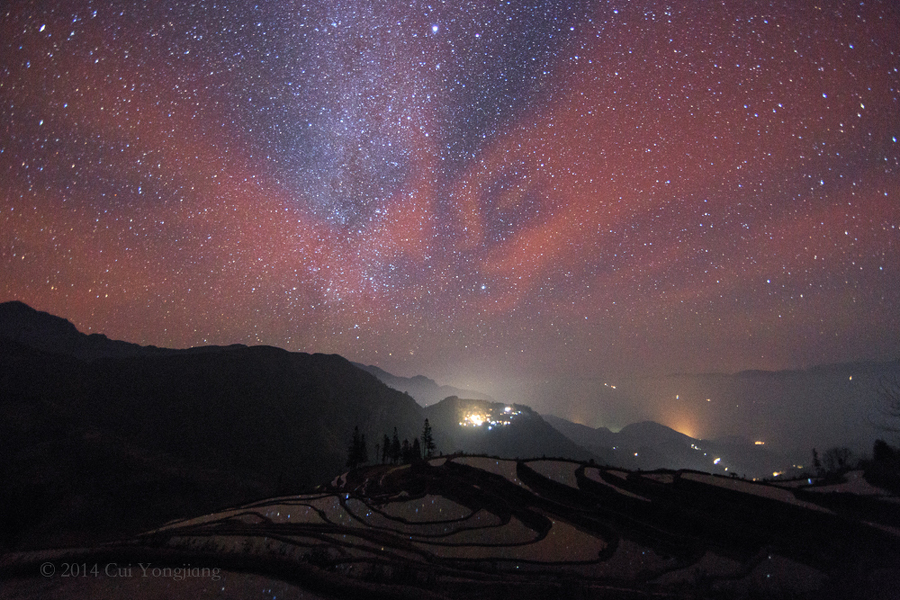
Katherine Marrinan
Earth Science C Even
Feb. 6, 2014
This is a picture of the sky with many stars from a view from the ground. The picture was taken by Cui Yongjiang in China. It appears to be taken after a sunset and it looks very much like the milky way. Some of the stars look bigger and brighter than some of the others.The questions I have are: why does the color from the sun still remain in the sky? Why and how did the stars come out like that? Is the north star in this photo? And the final question is that is this a possible version of the aurora? These questions seems logical for this image because the purple colors look alot like the aurora and some of the stars are just fasinating to look at.
Cite: http://apod.nasa.gov/apod/astropix.html
Wow! I didn't know that you could see that many stars with a telescope, let alone your bare eyes. I wonder what it is about the atmosphere or lack of light pollution which lets you see so many stars?
ReplyDeleteIt's so mind blowing how Cui Yongjiang was able to capture such a picture of breathtaking beauty. I thought pictures of such vivid and bright stars were only able to be taken in space! This picture reminds me of the Milky Way because of the Milky Way's side view with stars surrounded by it. Questions that arise for me are, "Do scientists and astronomers have a specific name for this?" and, similarly to yours, "Is this a version of an aurora" because of the colors in the sky. Regardless, this picture is a stunning representation of the beauties that can occur on Earth, especially from the view of a person on ground.
ReplyDeleteThat is really cool! it must be really nice to live in a place where you can see stars like that. It's really cool how the stars are reflected in the pool. Do you know where in china this was taken? It looks kind of like the northern lights, I wonder if it is.
ReplyDeleteThis picture amazing, especially because the stars are reflected in the pools of water. After reading your description, I have the same questions as you, and one more: why are some of the stars bigger and brighter than others?
ReplyDeleteAfter much struggle and frustration, I have decided to upload this comment on Edline and copy pasted it onto this comment box to give a long due apology. Aha, I’m sorry. I didn’t realize you did this post until after I chose the picture because Blogspot is inaccessible on school computers (something really needs to be done about this). Anyway, I’m glad we both could decide on a picture that is so exquisite! As for your questions, I can answer some of them.
ReplyDeleteKatherine, this is not a form of an aurora; it’s an air glow, but it’s very easy to get the two confused and I’ll explain why. Both air glows and aurorae are both caused by excited atoms AND originate from the same altitude. However, there is one key difference: aurorae are made by the collisions of energetic particles, whereas air glows are caused by short wave length solar radiation through chemilumiscence, the production of light through the excitation of hydrogen and nitrogen with hydroxyl ions. (Keep in mind that the formation of aurorae also involves hydrogen and nitrogen so they have similar colors.)
Look at this link for more information on air glow: http://www.atoptics.co.uk/highsky/airglow2.htm
As for why the stars are so bright and simply visible, there is little information that I can provide on that through my own knowledge of my astronomy as well as our lord and savior Google. All I know is that the Milky Way is visible. Why is that? How can we learn more about astronomical phenomenon?
Also @ Ymmit12099: This picture was taken on January 25th, 2014 at the Yunnan Province of southern China.
Wow ! I really like the picture, it is very interesting how the color of the sun still remains after sunset and how you can see al the stars. I would have never thought you can see as many beautiful stars with just a microscope!
ReplyDelete